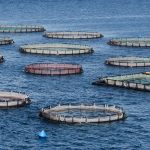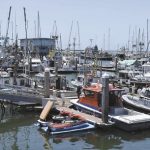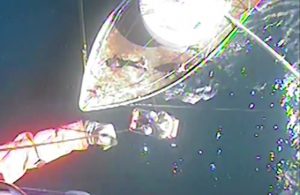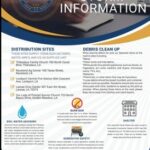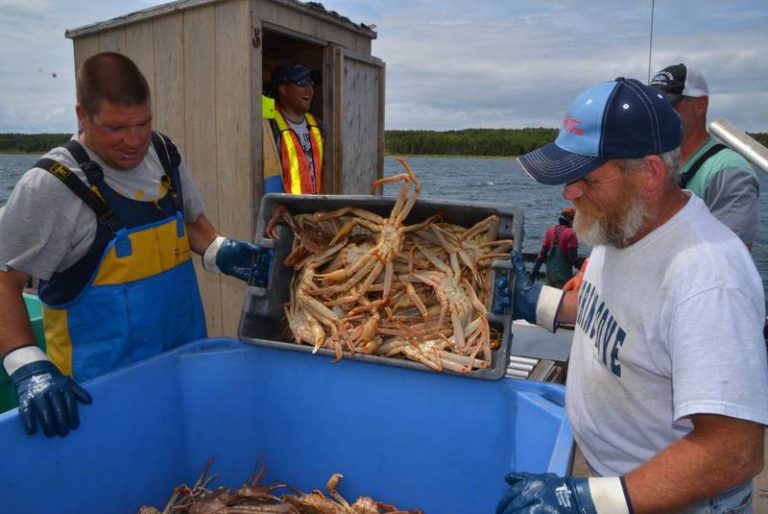Search Results for: Misty Blue

F/V Misty Blue: Bodies of missing fishermen found and recovered
The bodies of the two missing fisherman from the Misty Blue have been found by state police divers, a department spokesman announced this evening. “Our divers recovered two bodies from the sunken vessel Misty Blue today. The first recovery was at 10:30 a.m., the second at 4:20 p.m. We offer our deepest condolences to their families. I have no further information to relay,” said spokesman Dave Procopio. The search for the missing men was called off Dec. 5. That same night state police announced they had found the sunken boat. click here to read the story. 18:51
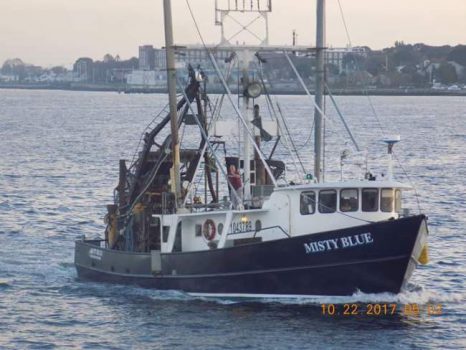
State Police Divers Search for F/V Misty Blue Fishermen
State police divers are searching the waters off Nantucket for two fishermen who were aboard the vessel Misty Blue when it sank Dec 4, a spokesman said. Lt. Tom Ryan a Massachusetts State Police spokesman, confirmed today that divers are searching for the two missing fishermen. He did not have any other details. Mondays dive followed the postponement of at least five State Police dives because of weather conditions. click here to read the story 14:53

F/V Misty Blue: Divers will look for missing fishing boat Thursday
The Coast Guard has suspended its search for the two fishermen who went missing after their boat sank off the coast of Nantucket, and because of the current weather conditions, State Police divers are waiting until Thursday to go into the water and confirm the location of the sunken vessel. click here to read the story 13:04

F/V Misty Blue – Search continues for missing fishermen; names released
The Coast Guard and Massachusetts State Police divers are continuing to search today for two missing crew members from the Misty Blue, according to a Coast Guard spokesperson. Michael Roberts, 44, and Jonathan Saraiva, 32, went missing after the Misty Blue rolled over and sank at around 6:30 p.m. Monday, 10 miles off of Nantucket, according to Atlantic Capes Fisheries Inc., which owns the surf clam harvesting vessel. Four members occupied the vessel when the incident happened. Two men, Misty Blue’s Captain Eric Arabian, 44, and a crew member, Colby McMullen 22, were rescued by the fishing vessel Enterprise. click here to read the story 12:35
Wife of missing boater says he was in galley – click here to read the story
F/V Misty Blue Missing – 2 Rescued, Coast Guard searching for 2 crew members
The U.S. Coast Guard Northeast is searching for two crewmen who were aboard a vessel in distress 10 miles off the coast of Nantucket on Monday. The mission was launched following an EPIRB alert. We will update this as we receive more information. (photo credit Jim Dills)
Wife of missing fisherman speaks out as search continues – click here to read the story 08:37
Coast Guard searching for 2 crew members following vessel in distress off Nantucket – click here to read the story02:16
2 rescued, 2 missing as Coast Guard searches for Misty Blue off Nantucket – click here to read the story
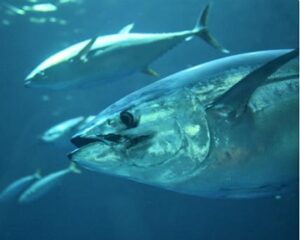
The Largest Bluefin Tuna Ever Recorded Was Caught Off the Coast of Nova Scotia
The Atlantic Bluefin tuna is the largest species of the Scombridae family and is known to reach speeds of 43mph in the ocean. While most of the Atlantic Bluefin tuna range between 500 to 1000 lbs, some are known to tip the scale at 1,500lbs! Per reports, the largest Bluefin tuna ever caught was in 1979 and weighed a whopping 1,496lbs: “Not only is Ken Fraser’s bluefin the biggest tuna ever recorded by the International Game Fish Association, it is also one of the most iconic records of all time. He landed the world record bluefin tuna on October 26, 1979, fishing with Capt. Eric Samson aboard Lady and Misty out of Port Hood, Nova Scotia. >click to read< 08:11

Newly Launched New Bedford Foundation Aims to Keep Fishermen Safe
A new charitable foundation in New Bedford is getting started on its mission to keep fishermen safe by supporting the creation of safety standards in one of the most dangerous industries in the country. Board members yesterday announced the launch of the Seaworthy Foundation, which advocates for safe working conditions on fishing vessels. The foundation was started by family members of fishermen Michael Roberts and Jonathan Saraiva, who died in December 2017 when their boat, the F/V Misty Blue, sank off the coast of Nantucket. >click to read< 15:20

NTSB says clam tank flooding likely caused fatal sinking
Federal investigators have determined that the likely cause of the sinking of fishing boat off the coast of Nantucket in 2017 that claimed the lives of two crewmembers was flooding in one of the vessel’s clam tanks. The National Transportation Safety Board in its Feb. 6 report said although flooding in the Misty Blue’s port clam tank was the “probable cause” of the sinking, how the water got in remains undetermined. >click to read<15:50

A Fundraiser for the Family of Fisherman Mike Roberts
On December 4, 2017, Mike Roberts lost his life when the Misty Blue clamming boat sunk 10 miles off the coast of Nantucket. Mike left behind his wife of almost 10 years Tammy, along with her four children, Ryan, Breanne, Kalie and Kevin, which Mike thought of as his own. Mike was loved by everyone in the community but most of all by his granddaughter Aaliyah. Mike’s death has left his family with a great financial hardship. Mike went on this trip with the intention of his salary to pay for their family’s Christmas. With Mike gone, Tammy is left in a one paycheck family to run the household and cover his final expenses. Please help the Roberts family keep Mike’s memory alive by donating what you can. Bright blessings to you and your family and Happy Holidays. click here to donate if you can. 07:15

Jack Spillane: In gratitude for fishermen
They that go down to the sea in ships, that do business in great waters; 24 These see the works of the Lord, and his wonders in the deep. Psalm 107 Misty Blue In the wake of its tragic destiny, even the name seems to betoken sadness. Misty Blue, of course, could also bring piece of mind and beauty. And surely there was a time when the rugged guys who worked the surf clammer on a gentle Atlantic day thought about their boat that way. Click here to read the story 22:24
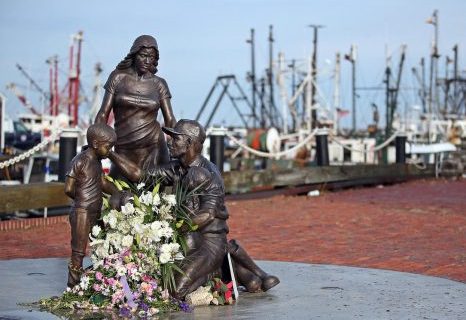
New Bedford again grieves for its sons lost to the sea
The loss of two fishermen in the sinking of a clamming boat this week stunned this port city long familiar with the dangers of the sea. New Bedford Mayor Jon Mitchell called the Misty Blue tragedy “a stark reminder of the dangers inherent in commercial fishing,” adding that it “underscores the respect and appreciation we have for those who make their living at sea.” He said the city pledges its support for the families of the lost crew members of the Misty Blue — Jonathan Saraiva and Michael Roberts. click here to read the story 11:38

Lawsuit alleges sunken fishing boat was ‘unseaworthy’
A lawsuit filed less than a month ago alleges the now-sunken fishing vessel “Misty Blue” was unseaworthy. The Coast Guard suspended the search for the missing crew members Michael Roberts, 44, and Jonathan Saraiva, 32, Tuesday night after the vessel sank about 10 miles off the coast of Nantucket Monday night. According to court documents, the $1.5 million civil lawsuit was brought by a Fairhaven fisherman who claims that he was seriously injured in September due to the captain and crew’s negligence and the “unseaworthiness” of the Misty Blue. click here to read the story 08:52

Coast Guard, local agencies searching for 2 fisherman near Nantucket from 4 man crew
Coast Guard crews along with local agencies and good Samaritans are searching for two fisherman after their fishing boat sank Monday evening 10 miles southeast of Nantucket. At approximately 6:10 pm the First Coast Guard District command center received a distress call via an emergency positioning indicating radio beacon (EPIRB) from the 69-foot fishing vessel Misty Blue with four crewmembers aboard. The fishing boat Enterprise was in the area rescued two of the crewmembers and transferred them to Coast Guard Cutter Steelhead. Coast Guard and local agencies are currently searching for the remaining two crewmembers. Link 21:53
Coast Guard frees fishing boat from ice in Quicks Hole Passage
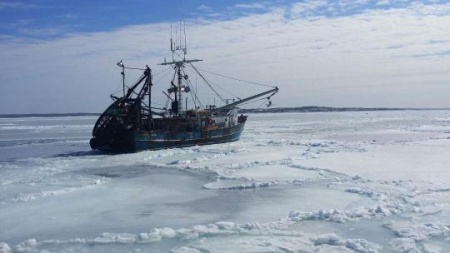 A Coast Guard crew responded to a fishing vessel trapped in ice in Quicks Hole Passage, Woods Hole, Massachusetts, Friday. At about 10 a.m., watchstanders at Coast Guard Sector Southeastern New England were notified that the 69-foot fishing vessel Misty Blue was stuck in ice north of the passage. Read the rest here 15:59
A Coast Guard crew responded to a fishing vessel trapped in ice in Quicks Hole Passage, Woods Hole, Massachusetts, Friday. At about 10 a.m., watchstanders at Coast Guard Sector Southeastern New England were notified that the 69-foot fishing vessel Misty Blue was stuck in ice north of the passage. Read the rest here 15:59
Alaska: 8 People Were Murdered Aboard a Fishing Boat. Though It’s the State’s Most Infamous Mass Killing, It’s Also Unsolved.
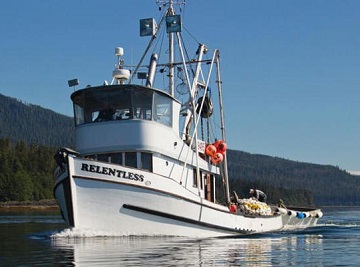 It was the men who worked on a troller named “Casino” who first noticed the fire. Thick black smoke was rising high against the misty skies of a crisp fall afternoon. A “Casino” crewmember alerted authorities in nearby Craig, Alaska, then rode their fishing boat less than a mile across the water to see if they could help. Their destination was Fish Egg Island, on the west side of Prince of Wales Island. It’s been over 40 years since the fire, the investigation and the discovery of the largest mass murder in the history of the state of Alaska. The tragedy goes unsolved, despite two trials. Residents of the fishing village of Craig have heard all the theories about who committed the horrible crimes that obliterated an entire family. Eight people were living aboard, half of whom were members of the Coulthurst family. Fishing boat veterans who had no known enemies and piloted a beautiful seine admired by the local fishing fleet. >>click to read<< 11:31
It was the men who worked on a troller named “Casino” who first noticed the fire. Thick black smoke was rising high against the misty skies of a crisp fall afternoon. A “Casino” crewmember alerted authorities in nearby Craig, Alaska, then rode their fishing boat less than a mile across the water to see if they could help. Their destination was Fish Egg Island, on the west side of Prince of Wales Island. It’s been over 40 years since the fire, the investigation and the discovery of the largest mass murder in the history of the state of Alaska. The tragedy goes unsolved, despite two trials. Residents of the fishing village of Craig have heard all the theories about who committed the horrible crimes that obliterated an entire family. Eight people were living aboard, half of whom were members of the Coulthurst family. Fishing boat veterans who had no known enemies and piloted a beautiful seine admired by the local fishing fleet. >>click to read<< 11:31
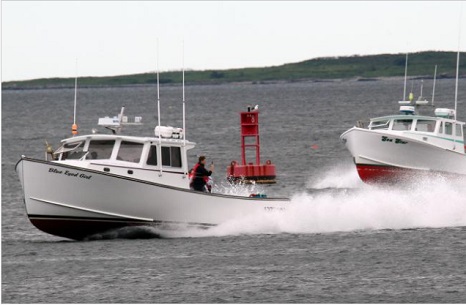
Get your motor running: Lobster boat racing season is here!
The season opener of Maine lobster boat racing season 2023 shifts into high gear Saturday, June 17 in Boothbay Harbor with the Charlie Begin Memorial Lobster Boat Races. Boat captains can sign up at Brown’s Wharf on Atlantic Avenue between 9 and 10 a.m. There is an entry fee of $20, but that fee will be waived for boat captains 18 or under to encourage younger participation in the event. The races start at 10 a.m. All entry fees collected will go to Maine Lobstermen’s Association. Ashleeann Lowery has been organizing the Boothbay Harbor races for well over a decade and has been a member of the racing committee since 2007. “I heard, although you never know until these guys show up,” said Lowery, “but I heard David Taylor’s Misty was re-powered this year, and that just might give Blue Eyed Girl a little run for her money.” >click to read< 11:31
Regional Fishery Management Council Coordination Committee addresses Oceana bycatch report – Calls for Detraction
Regional Fishery Management Council Coordination Committee
June 18, 2014
Gib Brogan, Fisheries Campaign Manager, Oceana 1350 Connecticut Ave., NW
5th Floor
Washington, DC 20036 USA
Dear Gib:
The Regional Fishery Management Councils recently became aware of Oceana’s Wasted Cate/11 report (“the report” hereafter). Through actions such as time/area closures, gear modifications/prohibitions, bycatch caps, participation in take-reduction groups, and modifications to rules that result in regulatory bycatch, the Councils have been leaders in promoting (and requiring) bycatch reduction. At any given time there are often multiple efforts of some type at each Council tied to bycatch reduction, and non-governmental organizations (NGOs) play an essential role in the Council process as environmental advocates. n
However, after comparing the report to core reference documents, the Councils are concerned that a variety of substantial errors, omissions, and organizational approaches in your Wasted Catch report may seriously miscommunicate bycatch information. Accordingly, We recommend that you retract the report until you have the time and/or resources to develop a better understanding of the data summarized in the report. Misinformation in reports like Wasted Catch undermines those productive relationships between industry, management, and NGOs that have been effective in reducing bycatch. lf your goal is to accurately communicate information, and to avoid such issues in the future, We strongly recommend that Oceana consider adopting a standardized peer review process to ensure that reports like this accurately and objectively represent the best available science.
While the Councils realize that some problems in the report are related to difficulties Oceana had in interpreting the National Marine Fisheries Service’s (NMFS) National Bycatch Report and its 2014 update, relying so much on any one document to describe a complex issue is unlikely to result in a full representation of the best available science. There are a Wide variety of NMFS and Council documents that describe and contextualize bycatch information, such as stock assessments, Stock Assessment and Fishery Evaluation (SAFE) reports, environmental assessments, environmental impacts statements, technical memoranda, and articles in scientific journals. To illustrate the kinds of issues We identified based on a quick reading, some examples are provided below. They by no means represent a full review of the document by the Councils.
I http://oceana.org/sites/default/files/reports/BycatchHReporLFINAL.pdf
Mid-Atlantic
The report said the Mid-Atlantic Bottom Trawl Fishery consists of vessels catching “summer flounder, soup and black sea bass as Well as dogfish and skates (p. 34). Depending on the kind of bycatch numbers
the report referenced from the National Bycatch Reports (fish, turtles, or marine mammals), this broad gear type actually represents many other fisheries or parts of fisheries including but not limited to scallops, croaker, squids, mackerel, bluefish, and monkfish. This issue leads to readers being very misinformed about Which fishery is responsible for what bycatch (and to what degree), and also means that the listed “yearly numbers of vessels and fishery Values do not at all match the fleets from which the report describes bycatch numbers.
For example, a reader would conclude that 95 vessels primarily targeting summer flounder, scup, and black sea bass (as Well as dogfish and skates) cause 350 turtle deaths (there is no page number to reference but it is the page on “Mid-Atlantic Bottom Tran Fishery”). However, even a casual reading of the primary literature leads to a different conclusion. The National Bycatch Report Update (p. 22)4 does state the average turtle interaction rate for Mid-Atlantic bottom trawl (fish and scallop) fisheries to be 353. However, only 110 of those are in the summer flounder, scup, and black sea bass fisheries (scallops and croaker account for most of the rest), and that 110 is composed of 60 turtles estimated caught and 50 turtles that Were estimated to have interacted/escaped with turtle excluder devices.
In addition, in the 2012 summer flounder, soup, and black sea bass specifications environmental assessment, it notes that for 2008-2010 there were 12 actual (versus extrapolated) observed sea turtle takes (all loggerhead) and that 10 of those Were released alive (83%) and 2 (17%) were dead. Thus a more accurate (but less sensationalistic) description of this fishery would have been that turtle excluder devices appear to be reducing turtle catches in this fishery by about 45%, and of the remaining 60 turtles estimated to be caught by the fishery, most are likely released alive (83% on observed trips).
Similar fishery mischaracterizations occurred with both the marine mammal and bycatch parts of the “Mid-Atlantic Bottom Trawl Fishery” section, in both cases leaving readers seriously misinformed compared to the actual information in the cited reference documents.
New England
The summary of discards for the Northeast bottom trawl fishery (p. 32) and the New England and Mid-Atlantic gillnet fishery (p. 36) contains a number of statements that are misleading to the reader. For example, the placement of halibut as the first target species for the bottom trawl fishery is a misrepresentation as current regulations allow vessels to only land one halibut per trip.
The report states that the New England and Mid-Atlantic gillnet fishery is responsible for “more than 1,200 mortalities” of sturgeon (p. 36). While “more than 1,200” is applicable to total bycatch, observer
“data indicates that mortality rates of Atlantic sturgeon caught in… gillnet gear is approximately…20%”7, again confusing bycatch Versus mortality.
The reference provided for the bottom trawl observer coverage level of 22% is incorrect; it can only be assumed that the authors meant to reference the “Summary of Analyses conducted to determine At-Sea Monitoring Requirements for Multispecies Sectors FY2013”8, Which refers to an at-sea monitoring coverage of 22% providing reliable estimation of catch based on a coefficient of Variation precision standard of 30%. lf this is indeed the appropriate source, it is important to note that this report refers only to the New England multispeies fisheries and not the Northeast bottom trawl fishery as implied in the report.
The report references the U.S. National Bycatch Report Update and provides an estimate of 350 sea turtle mortalities in the New England and Mid-Atlantic gillnet fisheries. This is a misrepresentation of the data as it implies 100% of the turtles are killed; the legend for the referenced table indicates that the bycatch estimate includes both mortalities and individuals released alive and does not distinguish between the two.
In the “Problems” sidebar in the northeast bottom trawl fishery (p. 32), too many sea turtle mortalities are said to occur. According to the Endangered Species Act Section 7 Consultation for 20139, there was one interaction with a sea turtle within the Gulf of Maine/Georges Bank region for trawl gear (Zero for gillnet) in the provided analyses. As noted in the Consultation, interactions with sea turtles in this region are unlikely because sea temperatures are colder than those preferred by sea turtles. It is unclear why this is included as one of the problems for the northeast bottom trawl fishery.
The report states that shrinking quotas encourage discarding (p. 32); the logic used to construct this statement is not intuitive and should be further explained. If available quotas, and subsequently fishing opportunities, are reduced it is unclear how this could increase bycatch. In a recent management action (Framework 48 to the Multispecies Fishery Management Plan), the minimum fish size of a number of groundfish species was reduced in order to reduce regulatory discards; this Was done at a time of decreasing groundfish quotas. In addition, the alternative (not reducing quotas when science suggests We should) Would seem untenable.
The report states that the discarding of millions of skates in the bottom trawl fishery will likely cause a change to the population and the ecosystem, however, no supporting reference is provided. Recent research, incorporated into management by NEFMC (Framework 2 to the Northeast Skate Complex), indicated that discard mortality rates for 3 of the 7 skate species in the Northeast Skate Complex was lower than the assumed 50% for trawl gear; smooth skate increased to 60%. Winter and little skates are the most abundant skate species in the Northeast region. Discard mortality rate estimates for winter and little skates were determined to be 9% and 22% respectively (Mandelman et al. 201312).
The report advises to replace gillnets with cleaner gears such as harpoons in the California drift gillnet fishery targeting swordfish. Unlike documents developed by Councils that analyze biological and socioeconomic impacts, the report does not reveal that harpoon gear is comparatively inefficient, and the method is considered artisanal rather than commercially viable. In other Words, a harpoon fleet could not sustain the fishing community.
Unfortunately, the National Bycatch Report Update, which is extensively used in the Oceana report, lacks sufficient detail and this distorts the summaries in the report. For example, the national report uses observed individuals expanded for sampling rate, While the SAFE document13 for the California dritt gillnet fishery also notes that 98% of the ocean sunfish (molas) are returned alive and undamaged. The ocean sunfish catch represents 91% of the total bycatch in the California drift gillnet fishery (in individuals; mola are large fish and probably represent an approximately similar proportion of fish bycatch by Weight). The National Bycatch Reports do not provide that level of detail, and the Oceana report made little effort to incorporate readily available and more detailed information on many of the fisheries and species described.
The report states that in 2010, an estimated 49 dolphins and 16 endangered sperm Whales were seriously injured and killed in the California drift net fishery (p. 3 l) and that these numbers could be underestimates because observers cover less than 20 percent of the total fishing effort and almost half the boats are never observed at all. As mentioned above, the estimates from the National Bycatch Reports are expanded. for sample rate, and therefore may be underestimates or overestimates.
Western Pacific
The report omits U.S. purse seine fisheries operating primarily in the Western and Central Pacific, which make a considerable number of sets on aggregating devices (PADS). FAD sets are known to have substantial bycatch of juvenile bigeye tuna, and a range of other non-target pelagic species, most of which are all discarded. Some of the discarded species are valuable food fishes caught in Pacific Islands troll fisheries. The issue of purse seine bycatch and its impact on the food security of the Pacific Islands has been raised as a research topic at the Western and Central Pacific Fisheries Commission (WCPFC) Science Committee.
The tacit assumption that bycatch leads to depletion of stocks is naïve and uninformed, and should not be applied uniformly to all species in a stock complex. For example, some bycatch species in the Hawaii longline fishery are showing marked increases in abundance (e.g., lancetfish, sickle pomfret, escolar, and snake mackerel)15. Such changes may result from the complex interaction of fisheries across different trophic levels and climate Variability in the sub-tropical ocean ecosystem.
The report identifies longline fisheries as one of the three “harmful” gear types. However, longline fisheries, with sufficient gear modification and monitoring can be a “clean gear, as demonstrated by the
13 http://wWW.pcouncil.org/highly-migratory-species/background/
Polovina J .1., M. Abecassis, E.A. Howell, and P. Woodworth. 2009. Increases in the relative abundance of mid-trophic level fishes concurrent with declines in apex predators in the subtropical North Pacific, 1996-2006. Fishery Bulletin. 107(4): 523-531.
Hawaii longline fishery. The Hawaii longline fishery has shown how seabird and sea turtle interactions can be reduced by over 90% with relatively simple gear and fishing technology modifications 16,17. Green sea turtle interactions have also been significantly reduced in the American Samoa longline fishery simply by positioning all hooks to at depths greater than 100 m18. Furthermore, not all longline fisheries pose a threat to sharks. The American Samoa longline fishery has a small shark bycatch of less than 5%, While the shark bycatch in the Hawaii longline fiishery has been reduced by approximately 50% and approximately 98% of sharks are released alive19.
The Hawaii fishery is now recognized globally as the benchmark for environmentally responsible pelagic longline fisheries. Its turtle and seabird technologies have been adopted by two Pacific tuna regional fishery management organizations (WCPFC & Inter-American Tropical Tuna Commission). Further, WCPFC has adopted the Swordfish sea turtle interaction rate from the Hawaiian fishery as the minimum standard against which other shallow set longline fisheries are evaluated.
The comments in the report regarding the increased loggerhead take limit in the Hawaii longline Swordfish fishery are erroneous. The report argues that turtle take limits were increased despite
“compelling evidence of continued decline”, and NMFS should act according to the best and most recent scientific evidence. In reality, the North Pacific loggerhead nesting population has shown a dramatic sustained recovery of the population since the late 1990s20 with over 14,000 nests laid annually in Japan in recent years”. Furthermore, the increased take limits have been evaluated using a new climate-forcing model, which concluded that the interactions are unlikely to have significant impacts on the long-term population trends. Such a conclusion should not come as a surprise given that the fishery has only had on average less than eight loggerhead interactions per year since 2004 (with 100% observer coverage), all of which Were released alive and most of them Were juveniles (there is less of an effect on the population if a juvenile is impacted Versus an adult). NMFS acted on the best available science when it increased the number of sea turtles allowed to be taken by the Hawaii Swordfish fishery, as opposed to the outdated references cited by the report.
16 Gilman, E., D.R. Kobayashi, T. Swenarton, N. Brothers, P. Dalzell, and I. Kinan-Kelly. 2007. Reducing sea turtle interactions in the Hawaii-based longline Swordfish fishery. Biological Conservation, 1390-2): 19-28.
Gilman, E., D. Kobayashi, and M. Chaloupka. 2008. Reducing seabird bycatch in the Hawaii longline tuna fishery. Endangered Species Research, 5(2-3):309323.
l* FederalRegister v01.76,N0. 164,Augu5124,2011 52888-52889.
Walsh, W., K. Bigelow & K. Sender. 2009. Decrease in shark catches and mortality in the Hawaii-based longline iishery as documented by ñsheries observers. Marine & Coastal Fisheries: Dynamics, Management and Ecosystem Science, l, 270-282
NMFS. 2012. Biological Opinion for the continued operation of the Hawaii-based shallow-set longline Swordfish fishery under Amendment 18 to the Fishery Management Plan for Pelagic Fisheries ofthe Western Pacific Region. ([email protected]/Library/PUBDOCs/biological_opinions/SSLL_2012_BiOp_1-3 0-2012-Fina1_Amended_5-2913.pdÍ)
2l Asuka Ishizaki, Western Pacific Regional Fishery Management Council, personal communication based on unpublished data ůom
the Sea Turtle Association of Japan.
NMFS. 2012. Biological Opinion for the continued operation of the Hawaii-based shallow-set longline swordñsh fishery under Amendment 18 to the Fishery Management Plan for Pelagio Fisheries ofthe Western Pacific Region` (www.fpir.noaa. gov/Library/PUBDOCs/biological_opinions/SSLL_20 l 2_BiOp_l -3 0-2012-Fina1_Amended_5-29-13.pdi)
Gulf of Mexico
Estimates that shrimp bycatch is l0 pounds for every pound caught (p. 23 and p. 24) neglect to include the efforts to reduce bycatch since the l990’s (when this ratio was estimated). Since the implementation of many management measures, bycatch estimates have been reduced to somewhere between 4:1 and 6.5 :1, and, just as importantly, reduction efforts are still ongoing23.
Turtle Excluder Devices (TEDs) are required in all shrimp otter trawls in the of Mexico (with the exception for royal red shrimp trans in depths exceeding 100 meters). The statement “fisherman who are required to use Turtle Excluder Devices frequently install them incorrectly or intentionally tie them shut, leading the government to underestimate the number of sea turtles killed each year” (p. 30) lacks a citation and misleads the reader. The only report cited regarding compliance is an Oceana-produced report (Oceana, 2011, with a dead link provided). In direct contradiction, NMFS found that 75% of inspected Vessels Were fully compliant with TEDs and that those that were non-compliant were because ofthe angle of the TED. None of the vessels had its TED sewn shut24. The NMFS 2014 biological opinion also concluded that the continued implementation of the sea turtle conservation regulations applicable to shrimp trawling was not likely to jeopardize the continued existence of listed sea turtles, sturgeon, or sawfish.
According to the NMFS National Bycatch Report Update (p. 12), there were an estimated 6,199 turtle mortalities in 2010 for the Gulf of Mexico shrimp trawl fishery and the Southeastern Atlantic shrimp trawl fishery combined, nearly an order of magnitude (8 times) lower than described in the Oceana report. The report also fails to include the latest permit numbers, which have declined in recent years. In the of Mexico, federally permitted shrimp Vessels number fewer than 1,500 and approximately one third of the fleet has electronic logbook monitors so that effort can be more accurately estimated.
On page 19, there is no delineation that the bycatch estimates of dusky sharks are based on bycateh Values spanning 4 years from the NMFS bycatch report.
The statement that the southeast snapper-grouper longline fishery “likely” causes “significant mortalities” to sea turtles (p. 28) is false; sea turtles were not listed as heavily affected by the southeast snapper-grouper bottom longline fishery25.
The report also fails to recognize that the NMFS southeast region has been conducting an independent statistical review of the of Mexico Reef Fish Observer program and has increased at sea observer coverage. The claim of a 66% discard rate in the bottom longline fishery is not validated by the NMFS National Bycatch Report Update26, which does not present a bycatch ratio or percentage; these values cannot be estimated because landings are reported as pounds, and bycatch are reported as individuals.
South Atlantic
Combining the Gulf of Mexico and South Atlantic renders the numbers useless for any meaningful discussion given the differences in the fisheries in these two Councils’ areas. The basis of this problem lies with NMFS for combining these areas in the U.S. National Bycatch Reports, which Oceana primarily relied on for data.
On page 25, the table should separate Snapper-grouper longline into Gulf reef fish longline and South Atlantic Snapper-Grouper bottom longline. The shrimp fisheries should also be separated. On page 27, placement of the graphic showing Southeast Snapper-Grouper Longline Fishery gives the public the impression this occurs in the South Atlantic Council’s area which is not the case. In reality, the South Atlantic Snapper-Grouper Bottom Longline fishery consists of 19 golden tilefish endorsement holders and 12 blueline tilefish vessels who cannot fish south of St. Lucie Inlet, Florida or in waters shallower than 50 fathoms north of St. Lucie Inlet, Florida. Proposed regulatory changes for blueline tilefish Will reduce the number of bottom longline vessels in the fishery. Bottom longlines are prohibited for wreckfish, and they can only fish for the following deepwater species: snowy grouper, yellowedge grouper, misty grouper, golden tilefish, blueline tilefish, and sand tilefish; possession of all other snapper grouper species is limited to the bag limit. In addition, bottom longlines are prohibited in Special Management Zones: the Oculina Bank Habitat Area of Particular Concern (HAPC), all Deepwater Coral HAPCs, and all Marine Protected Areas (MPAs)27.
On page 28, the statement that “Seven out of eight targeted species in this fishery are still being overfished in the South Atlantic, and bycatch estimates remain unknown” is not factually correct. The Council’s 2010 Snapper Grouper Amendment 17A is cited which did at the time reference species that were overfished. However, of these species, only snowy grouper are targeted by the South Atlantic Snapper-Grouper Bottom Longline fishery. Snowy grouper are under a rebuilding plan and are ahead of schedule in terms of biomass rebuilding. The only other two snapper grouper species listed as overfished in the first quarter 2014 NMFS report are red porgy and red snapper28.
Finally, the South Atlantic Council requires that any snapper grouper permit holder carry an observer if selected by NMFS29. Currently approximately 20% complete a bycatch logbook form and those numbers are used to estimate bycatch for each stock assessment. There have been several observer studies on bycatch in the South Atlantic and those numbers are used in stock assessments. The Council also requires dehooking devices, non-stainless steel circle hooks north of 28 degrees north30, and sea turtle conservation measures all geared to reduce bycatch3l. In addition, the Council is awaiting guidance from NOAA General Counsel on how to proceed with a comprehensive bycatch monitoring program through Comprehensive Ecosystem-Based Amendment 332.
32 http://safmc.net/resourcelibrary/ce-ba-3-comprehensive-ecosystem-based-amendment-3
Conclusion
As monitoring and technology improves, almost every fishery Will have opportunities to examine and/or reduce bycatch in the future. The Councils in no Way suggest otherwise, and look forward to Working with fishery participants and interested parties to reduce bycatch. However, misinformation will only distract from actual conservation needs and efforts. While we acknowledge that there are no laws requiring Oceana reports to accurately represent the best available scientific information or to undergo peer review, to do so would be in the best interest of all involved parties. This is why we suggest that you retract the report until it is reviewed and corrected.
On behalf oft he eight Regional Fishery Management Councils,
Richard B. Robins, Jr.
2014 CCC Chairman
cc: RFMC Chairs, Vice Chairs, and Executive Directors
Eileen Sobeck
Lee Benaka

































